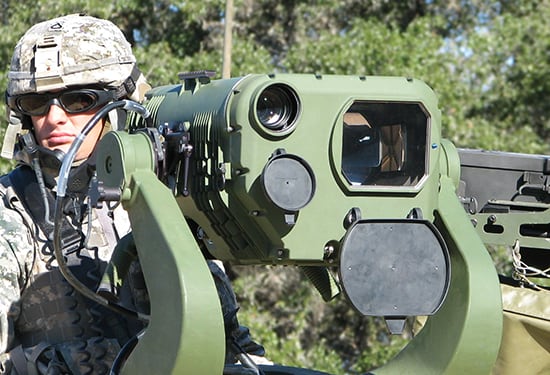HUNTSVILLE, Ala. — Raytheon and DRS Technologies announced they have teamed for the US Army's 3rd Generation Improved Forward Looking Infrared (IFLIR) program ahead of an expected Army procurement.
The companies anticipate the Army will field the sensor, meant to improve provide greater range performance and resolution, to upgrade FLIR in its ground vehicle fleet. The Army held an industry day at Fort Belvoir, Virginia, in February and is expected to kick off a competition with a request for proposals in May, followed by an engineering and manufacturing program and an award in the early 2020s.
Army Acquisition Executive Heidi Shyu, speaking at an industry conference in Washington on March 17, said the Army is ready to turn 16 years of research into a program of record and that the system is planned for the Abrams tanks and Bradley infantry vehicles. , speaking at an industry conference in Washington on March 17.
Digital Show Daily: Complete coverage of the AUSA Global Force Symposium and Exposition
The improved system would, for instance, give Fighting troops would have the ability to discriminate between shovels and rifles , say, at greater better ranges than second generation FLIR, or between a tank and a commercial truck.
"The new 3rd Gen technology will dramatically improve the range performance of ground combat vehicle sensors, allowing greater standoff range and identification capability," Clay Towery, senior manager for business development at Raytheon, said Thursday. "It's very important to the Army, and it will provide a significant combat advantage and it's critical that we field this technology to maintain combat overmatch."
The Raytheon/DRS announcement follows the two companies' previous effort on the 2nd Gen FLIR program, which saw nearly 20,000 sensors fielded to the Army, Navy and Marine Corps during the last decade. The two decided to extend the relationship for the new competition, Towery said.
The current generation uses a linear scanned array, a line of detectors that optically sweeps across its field a view. Technological advances allow for staring focal plane arrays which, because they use many detectors on an image plane and don't sweep, they absorb much more information. The other significant advance is its ability to see in two bands simultaneously, the long-wave and mid-wave bands.
"The Army and our team have a strong track record of delivering state-of-the-art next generation FLIR technology on our nation's premiere ground vehicle combat platforms," Sally Wallace, DRS C4ISR group president, said in a statement. "Our experience integrating a common FLIR across the Army's combat vehicle platforms is critical to synchronizing the Army's modernization strategy."
Email: jgould@defensenews.com
Twitter: @reporterjoe
Joe Gould was the senior Pentagon reporter for Defense News, covering the intersection of national security policy, politics and the defense industry. He had previously served as Congress reporter.








